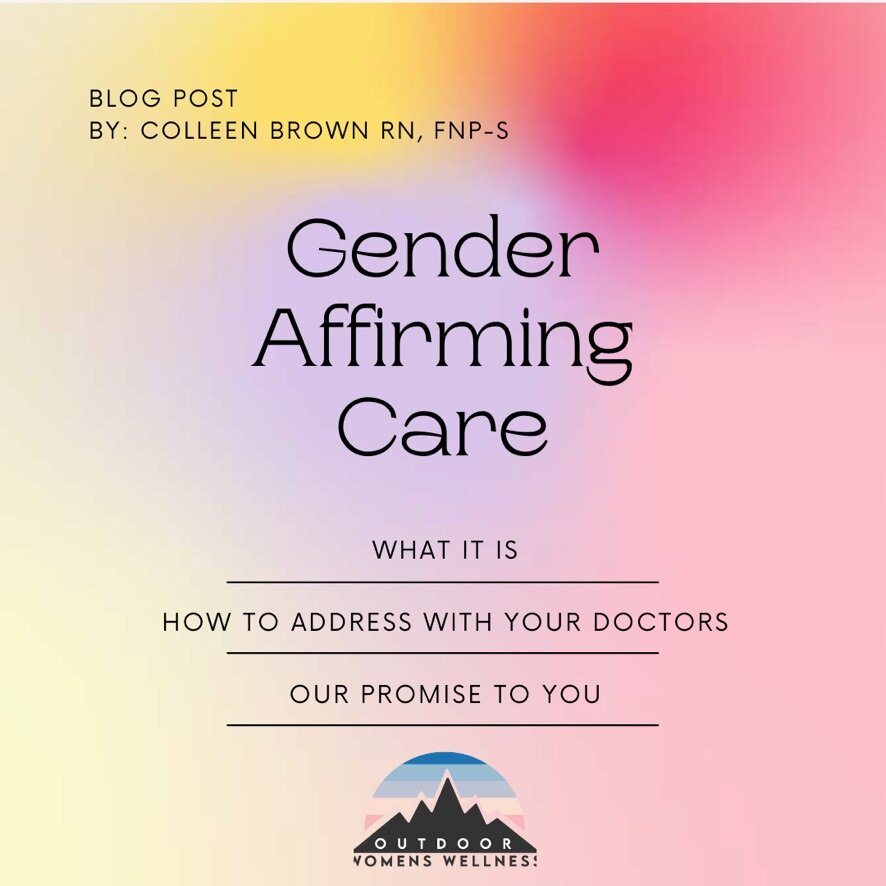Gender Affirming Care
Jan 18, 2023
Written By: Colleen McElroy, RN, FNP-BC
An Important Provider Tool
What is gender affirming care?
Gender affirming care can be defined as the interaction between a provider and patient (or client) where the provider and patient each address one another by preferred pronouns that are aligned with that person’s gender identity and expression. Examples of pronouns used in gender affirming care include (but are not limited to) he/him, she/her, and they/them.
Why is gender affirming care important?
People who are transgender or non-binary often face societal discriminations and have previous history of poor experiences when it comes to health care visits. Many providers are not formally educated on gender affirming care and its importance, therefore prompting delay of care in transgender and/or non-binary patient. Delay of care is especially prevalent in the population of transgender women of color (CDC). A person who is transgender or has alternate gender identity can experience several issues including barriers to accessing care, heightened cortisol levels from stress in everyday life including stigma and mistreatment in society, or verbal and physical harassment (CDC). These everyday experiences vary greatly from person to person, but studies have shown that transgender persons are at higher risk of mental illness and suicide, HIV infections, substance use disorders, and assault/abuse (CDC). To address needs of the transgender patient, providers must be able to articulate history and physical questions properly and sensitively as well as perform appropriate physical assessments that address all preventative or acute needs. As providers, we all need to be dedicated to providing inclusive and gender affirming care to all individuals as it will enrich the health of many lives.
How do I approach gender affirming care as a provider?
As health care professionals, we should be aware of the importance of our own bias and overall understanding of LGBTQ+ community needs. So, start within! We as providers can start researching and having conversations with one another and patients. We are not likely going to be experts on the ever-changing needs of society and each patient; however, making the effort to educate ourselves (you’re doing it right now by reading this blog post) can help in making a difference in someone else’s life! Having a conversation with patients who have alternate gender identity and being open to asking the question: “I would like to be respectful and ask you what name and pronouns you would like me to use for today’s visit?” (CDC). We as providers may also have to ask about sex assigned at birth for documentation purposes, specific treatments or procedures, or lab studies and preventative cares. In these situations specifically, we need to follow or precede these questions with requests for preferred pronouns so that clients do not feel misgendered at time of treatment.
The promise to gender affirming care at Outdoor Women’s Wellness means that the clients who engage with webinars and services provided by Outdoor Women’s Wellness will be addressed by their preferred pronouns including (but not limited to): he/she/they. All are welcome.

References
Patient-Centered Care for Transgender People: Recommended Practices for Health Care Settings. (2020). CDC. Retrieved from https://www.cdc.gov/hiv/clinicians/transforming-health/health-care-providers/affirmative-care.html#understanding
